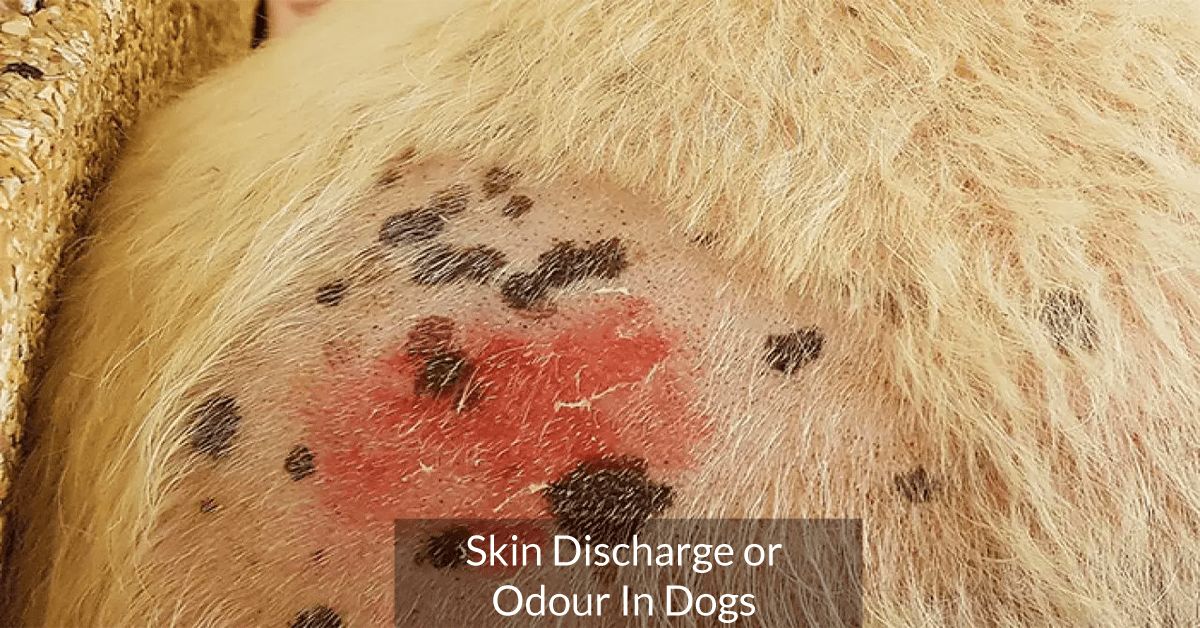If your dog is suffering from itchy and smelly skin, consider taking serious measures since you could be dealing with bacterial and skin yeast infections.
Skin discharge or odor in dogs seems to occur mainly due to two kinds of infections : Pyoderma and Malassezia dermatitis. These two infections are mostly concurrent and are often seen to develop simultaneously. During this time, you must treat your dog with excessive care and caution. Being well-informed about the signs, diagnosis, and treatment procedures of these infectious diseases might be an added advantage in recuperating your dog.
A Synopsis of Pyoderma
Pyoderma is a bacterial skin infection associated with the formation of papules or pustules on the skin. The most basic reason for the development of pyoderma in dogs is the invasion of bacteria making them allergic.
Signs of Bacterial Pyoderma :
• Formation of lesions on the dog’s body.
• Red patches on the skin.
• Forms pus-filled pimples.
• Excessive hair loss.
• Flakiness of skin.
Diagnosis of Pyoderma :
A diagnosis of pyoderma is often based on your dog’s clinical signs and medical history. Additional tests such as blood tests may be performed to determine if your pet has an endocrine disease such as hypothyroidism or Cushing’s disease, skin cytology, skin culture, or antibiotic sensitivity.
How to effectively treat Bacterial Pyoderma?
The typical treatment of pyoderma is antibiotic therapy for a period of three to four weeks. In chronic or recurrent cases, your dog must undergo a skin culture and antibiotic sensitivity test to ensure that the proper and suitable antibiotic is used. In these extraordinary cases, antibiotics may be needed for eight to twelve weeks. Common antibiotics typically include amoxicillin, cephalexin, and clindamycin.
Topical treatment includes sprays and medicated shampoos containing benzoyl peroxide, sulfur with salicylic acid which needs to be done at least two times per week for a period of three to four weeks. Besides that, it is important to ensure that your dog has clean, dry, padded bedding. For more effective solutions, Myfurries is the ultimate destination.
An Overview of Malassezia Dermatitis
Malassezia Dermatitis is a yeast skin infection in dogs associated with the proliferation of enzymes and metabolites which induce cutaneous inflammation. This often leads to the occurrence of greasy skin in dogs imparting an offensive odor.
Signs of Malassezia Dermatitis :
• Irritation of skin.
• Hair loss.
• Redness and inflammation.
• Pungent odor.
• Thickening of the skin.
Diagnosis of Infectious Malassezia Dermatitis :
Your dog has to undergo a physical examination and some blood tests to detect the presence of any other chronic diseases. The veterinarian must be well accustomed to your dog’s clinical as well as medical history. The diagnosis mostly depends upon cutaneous cytology along with clinical representation.
How to rewardingly treat Malassezia Dermatitis?
Malassezia Dermatitis in dogs can be treated through cytology – skin swab under the microscope and culturing – sending swab to the lab where cells are grown in a petri dish.The dog must be fed entirely grain-free and carb free food since the sugary foods can escalate the growth of yeast infection. Adding natural fresh garlic, Aragona, and fermented vegetables in your dog’s diet plan is also helpful.
Yeast loves moist environments and so it generally grows in the dog’s crevices between toe pad, armpits, and tail base. Application of topical sprays, cleaning ears, and using antifungal shampoo twice a week while bathing, will be fruitful. For strong yeast infections, additional immune testing is done to measure the immunoglobulin level and antibiotics are given accordingly. More important information on this can be availed by visiting Myfurries.
Last Words to add on :
Dogs are very sensitive animals and any discomfort caused to them while suffering from diseases must never go unnoticed. Look out for all the signs mentioned in this blog in your dog and contact a veterinarian at the earliest. For more information on diseases and allergies in dogs and how to keep them safe through effective treatment, subscribe to our page and never miss to keep an eye on important updates and alerts.



